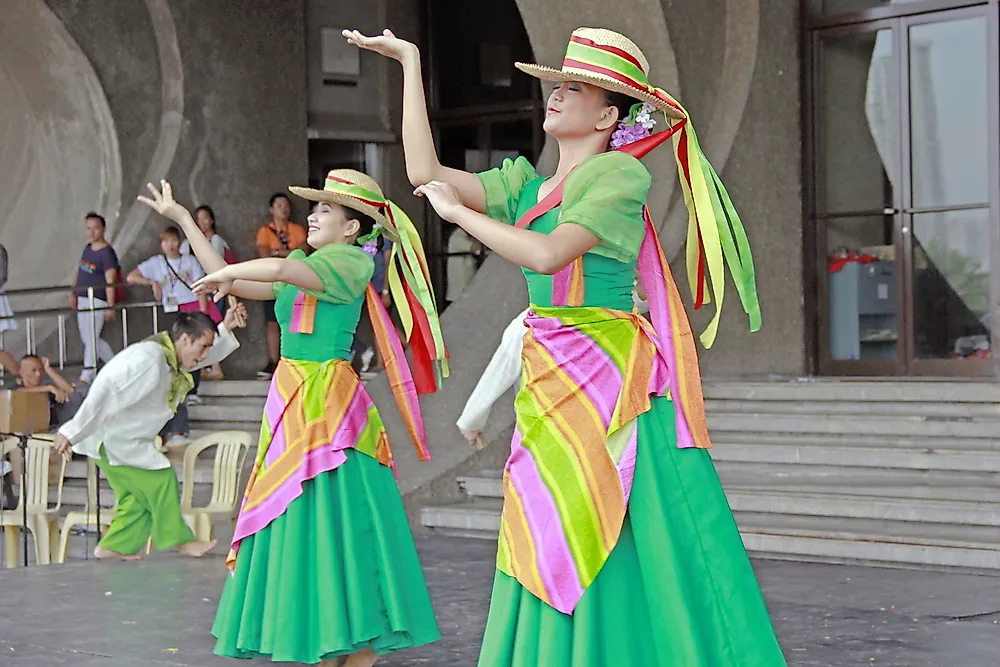Ethnic Groups In The Philippines

The Philippines is one of the world's largest island countries. Here is a list of the largest ethnic groups in the country.
Tagalog
Much is unknown regarding the history of the Tagalogs prior to the Spanish Colonization of the Philippine Islands in the 16th Century. However, since the Filipinos are mostly people of Malay origin, it can be inferred that the original Tagalogs were also of Malay descent. Due their concentration mostly in riverine locations, Tagologs historically have been involved in fishing, agriculture and sometimes craft. They are also known to engage in trade with surrounding nations such as China, Japan, India, and others. In terms of culture, the Taglog peoples lay much emphasis on respect and good behaviors which is evident in their soft-spoken language. Family bonds are also at the center of Tagolog life. However, Tagolog culture today has been influenced by Western ideologies. For instance, the predominant religion is now Roman Catholicism.
Cebuano
Cebuanos are Austronasian-speaking peoples that settled in the Filipino province of Cebu, between the 10th and 16th Centuries. They can also be found in Leyte, Negros Oriental and Negros Occidental provinces. Prior to Spanish colonization, Cebuanos were mostly involved in fishing, but today they are also involved in manufacturing, crafts, as well as other forms of food production. Cebuanos also held various Indigenous beliefs but most are now Christians due to Colonization. Regarding culture, Cebuanos are very artistic. They are involved in dancing, singing, painting and other forms of crafts. They also hold several beliefs regarding birth, death, and marriage, and place emphases on respect, humility and honesty.
Ilocano
The Ilocanos historically are also of Malay/Austronesian descent that settled in the Northern region of Luzon before the arrival of the Spanish. Around the 17th Century there was an uprising of the Illocanos, as well as among other ethnic groups, against Spanish oppression. Their major activities include rice farming, salt production, and a significant amount of fishing. Some cultural rites observed center around marriage, funerals, and rites of passage. Emphasis among the Illocanos is on independence through hard work, respect and tolerance for the feelings of others. They are also primarily Roman Catholics, but some also practice religious syncretism.
Visayan (Bisaya)
The Visayan settled in the Visayan Islands around 30,000 years ago. Today, they are concentrated in the provinces of Negros Oriental, Negros Occidental, and Cebu. They are mainly involved in the activities of farming and lumbering. Visayans are rarely involved in foreign trade, but they trade crops such as tobacco and coconut with other islands. Visayans place more importance on the present life than after-life. This is reflected in their adventurous and comfort-seeking lifestyle. The main religion among Visayans is also Roman Catholicism.
Hiligaynon
These are Austronesian language speakers who are a subdivision of the Visaya ethnic group. They are mainly found in the Western Visaya region. Some of their economic activities include rice and sugarcane farming, fishing, and textile production. The Hiligaynons believe that every deed comes with reward or punishment as the case may be. They have a very rich culture which includes very significant festivals. One of these is Dinagyang, which is a celebration of the baby Jesus in the form of a statue.
Bikol
Bikolanos are descendants of Southern Chinese immigrants. They mainly occupy the Southern peninsula of Luzon. Agriculture is the mainstay of the Bikolano economy, especially in such crops as banana, coconut, rice and corn. Co-operation among family members is highly emphasized in various aspects, including providing financial support to one's family. They are generally conservative in nature, while laying emphasis on education. Bikolanos have a host of cultural festivals, the most grand being the "Our Lady of Penafrancia" festival. This festival involves the celebration of the statue of the Virgin Mary, mother of Jesus.
Waray
Warays are also a subdivision of the Visayans that migrated to the Philippines during the Iron Age. They mostly inhabit the Islands of Leyte and Samar, which are largely underdeveloped. The main economic activities of the Waray people is farming and fishing, and the major cash crop is coconut. They are also involved in wine production. Warays are deeply involved in faith-healing rituals, which is the use of folk medicine, prayers or symbols to effect healing of various ailments.
Chinese Filipinos
These are Filipinos of Chinese ancestry who have arrived in the Philippines, especially those coming by way of migration from China. It is estimated that at least 2.5% of Filipinos can trace their ethnicity to China.
Other Groups
Other ethnic groups in the Philippines include the Kapampangan, Pangasinan, Kalinga, Ifugao, and Kankaney. Some of these ethnicities are subcultures or subdivisions of other groups. Hence, they share similar cultures with the above groups. These groups mostly occupy various locations on Luzon Island. Some other populations come from overseas, bringing with them their own cultures. These include Koreans, Japanese, Indonesians, and several others.
Ethnic Groups In The Philippines
| Rank | Ethnic Group | Share of Filipino Population |
|---|---|---|
| 1 | Tagalog | 28.1% |
| 2 | Cebuano | 13.1% |
| 3 | Ilocano/Ilokano | 9.0% |
| 4 | Visayan/Bisaya | 7.6% |
| 5 | Hiligaynon | 7.5% |
| 6 | Bikol | 6.0% |
| 7 | Waray | 3.4% |
| 8 | Chinese Filipino | 2.5% |
| Others | 22.8% |







